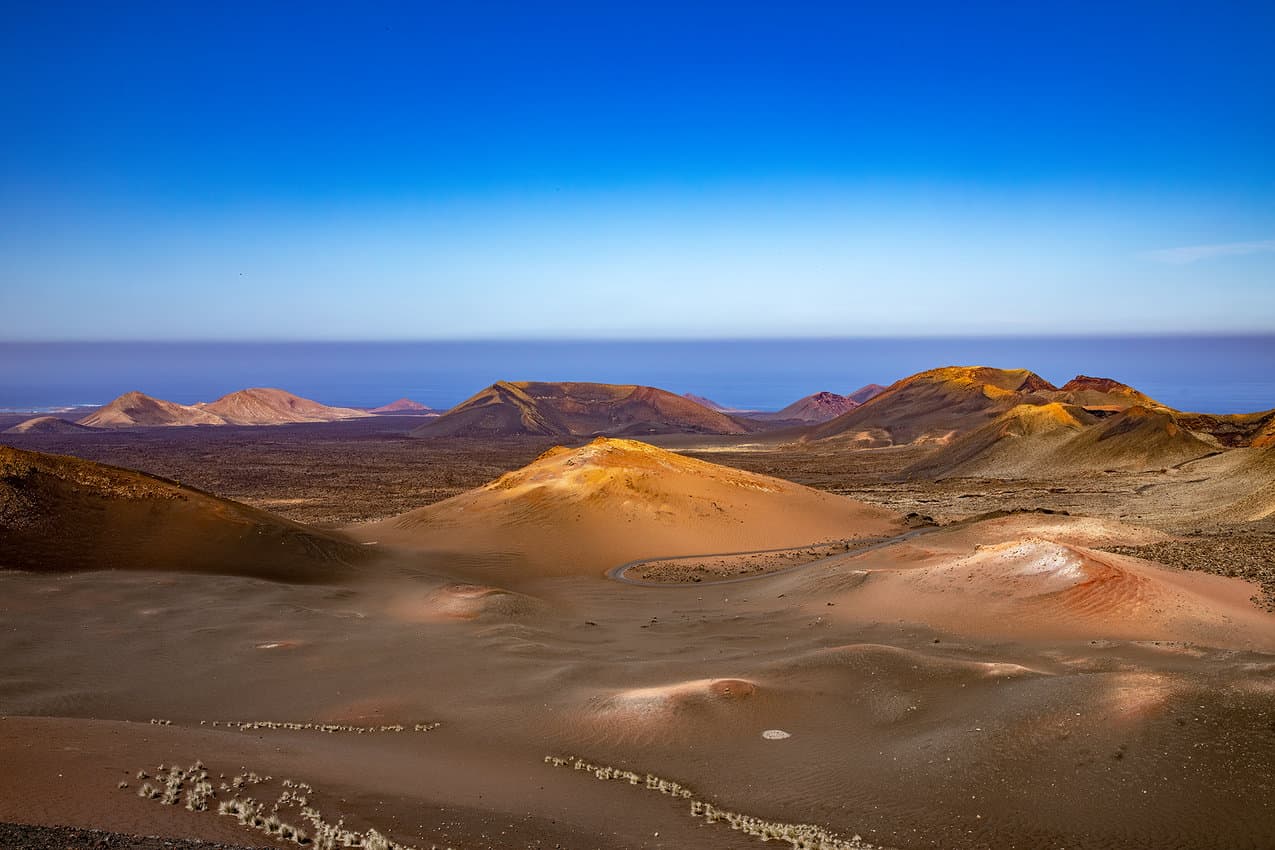
By Paul Shoul
GoNOMAD Senior Writer
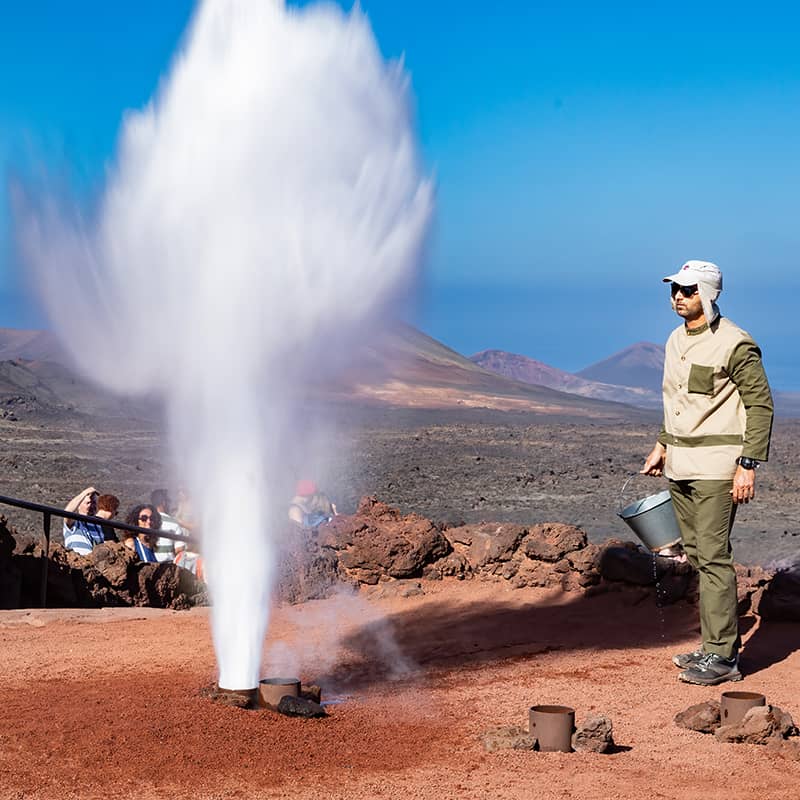
The Canary Islands of Spain, located just off the coast of northwestern Africa, have one of the best climates in the world. It is essentially late spring and sunny all of the time.
But underground, things are still a little hot on some of these eight islands, born from the volcanic eruptions in the “Canary hotspot” millions of years ago.
On September 1, 1730, the parish priest of Yaiza, Father Lorenzo, recorded these eyewitness accounts of volcanic eruptions that would change the face of Lanzarote forever.
The Earth Opened
“Between nine and ten o’clock at night, the Earth suddenly opened near Timanfaya, two miles from Yaiza.
An enormous mountain emerged from the ground with flames coming from its summit. The lava extended over to the northern areas to begin with, running as fast as water, though it soon slowed down and ran like honey.”
On September 7, a great rock burst upwards with a thunderous sound, The lava torrent arrived, instantly destroying Maretas and Santa Catalina in the valley. On September 11, the eruption became stronger.
From Santa Catalina, lava flowed to Mazo, covering the whole area and heading for the sea. It ran in cataracts for six continuous days making a terrible noise. Huge numbers of dead fish floated about on the sea or were thrown on the shore.”
Timanfaya National Park Created
The eruptions continued for 6 years, creating the 25 volcanoes called the Montañas del Fuego in what is now the Timanfaya national park.
The landscape of the park is jaw-dropping. Hundreds of volcanic cones rise from the lava fields that cover over a quarter of the island’s rich fertile ground. I felt humbled in the face of such power to destroy and create.
It looks prehistoric and otherworldly but is, in fact, one of the newest evolving pieces of our planet. Slowly, nourished by moisture in the trade winds, lichen breaks down the rocks creating new soil. It is a protected Biosphere Reserve.
The drama of the lava has been the backdrop for many movies about the past and the future.
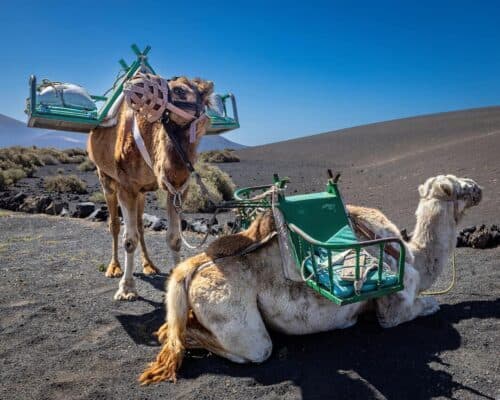
From the iconic, One million years BC with Raquel Welch to The Martian Chronicles, and even Dr. Who stopped by for an episode.
Here are a few tips from my last trip on where to go, what to do, and where to eat on this amazing island.
Timanfaya National Park
This is the most popular destination in Lanzarote for good reason. It is spectacular.
Be prepared for a long wait and a 10 euro fee. Tours are by bus through the park. The famous Lanzarote artist Cesar Manrique designed the visitor’s center and the Devil’s Restaurant.
Food is barbecued above a volcanic pit. Just outside, watch as dry brush bursts into flames when tossed into the geothermal pit and steam geysers explode into the air when water is poured into a pipe down to the volcanic rock just below the surface. Must see.
Fundación César Manrique
Fundación César Manrique is a cultural institution formed in 1982 by the renowned artist and architect César Manrique. It aims to preserve and promote the island’s unique natural and cultural heritage. Manrique’s former home and studio have been transformed into a museum of his work and creative vision.
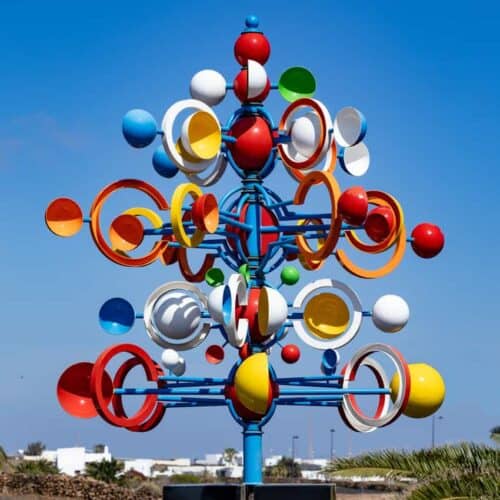
The Volcano House showcases his unique ability to integrate art and nature seamlessly. Built atop volcanic lava bubbles, the structure harmoniously blends into the surrounding landscape. Volcanic caves and chambers have been transformed into exhibition spaces, displaying Manrique’s artworks.
Manrique’s architectural imprint on the island is everywhere. He was obviously a work hard -play hard kind of guy, as evidenced by numerous high-resolution photos of him and his friends living the good life. His home felt like a set from an Austin Powers movie. I wished they had served a Martini to stroll through the lava living room.
Jameos del Agua
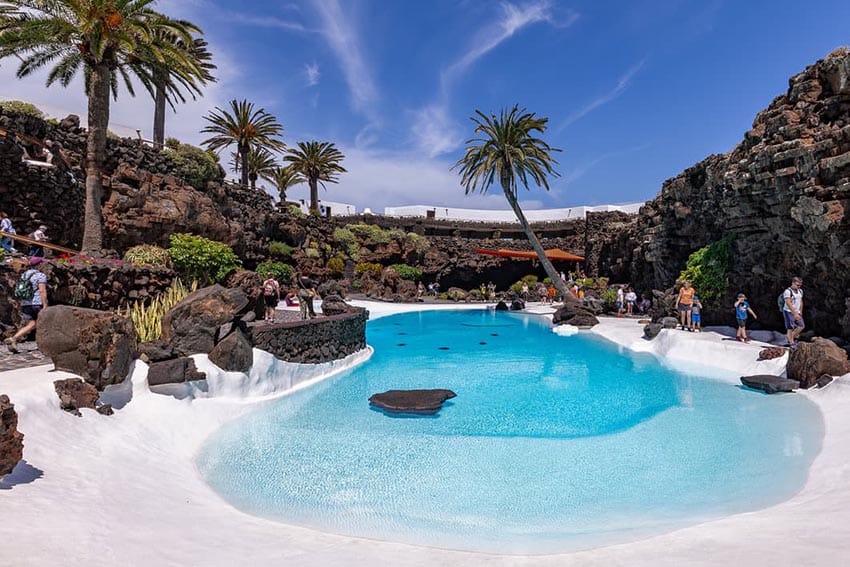
Jameos del Agua is a series of volcanic caves formed by the eruption of the Monte Corona volcano. Manrique transformed these caves into a captivating cultural and leisure complex of interconnected spaces, including a beautiful underground lake, a concert hall, a restaurant, a white-washed swimming pool oasis, and a museum combining art, architecture, and nature.
The restaurant was terrific, and the museum was full of immersive educational experiences of all things volcanoes, including a display of equipment motoring volcanic activity that was thankfully silent.
Salinas del Janubio
What was once a natural harbor and then a lagoon formed by volcanic eruptions in the 1700s, the salt flats of Janubio are a designated site of scientific interest and a pilgrimage for any foodie wanting to experience where salt, “the only rock we eat” comes from.
Blessed with the natural filter of lava walls cleaning the ocean water, the salt flats produce an incredibly clean salt, free of microplastics, with the unique flavor of the Canary Islands. So cool to see how the salt is evaporated over time in square flats.
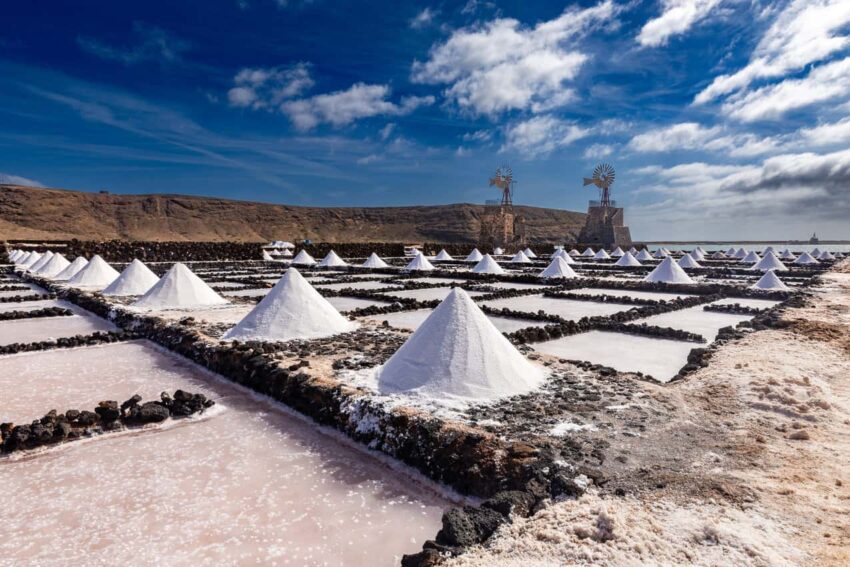
Traditionally, salt from the salt flats has been used to preserve fish. I purchased some high-grade Flor de Sal crystals that sit proudly on my kitchen table.
Volcán del Cuervo trekking
Hiking the 2.6-mile trail to the crater of the Cuervo volcano is an easy walk back in time through the
“Ravens Cauldron.” This is where the eruptions began in 1730. The crater is around half a kilometer in diameter. This mesmerizing trek through the lunar-like landscape is a must-see destination through the living history of Lanzarote.
La Graciosa island
Located just off the coast, La Graciosa is a small, laidback island definitely worth a stay or day trip from Lanzarote. The 30-minute ferry ride from Órzola to the port of Caleta de Sebo, along the coast, is beautiful.
Canarian Cusine
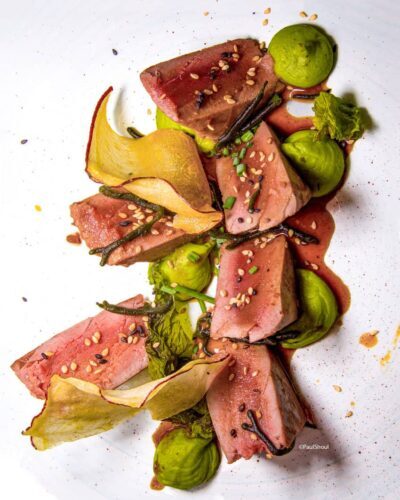
Although Lanzarote is officially a part of Spain, it is so close to North Africa that when the trade winds blow from the north, infused with dust from the Saraha desert, the locals say it is because “they are playing soccer in Morocco. ”
Uniquely Canarian Cuisine
Cuisine in Lanzarote is absolutely Spanish-based but is uniquely Canarian, with influences from Morocco and Latin America. As you would expect on an island, fish is the main attraction for many meals. Grilled octopus, prawns, and fried baby squid are a must-eat.
Goats are the main livestock on the islands, ideally suited to the dry, rocky environment. I had the best-roasted goat ever; the goat’s milk cheeses are wonderful.
The quality of the tomatoes that thrive in the rich volcanic soil will astound you. Potatoes boiled in seawater and served with spicy red or green mojo sauce are on every menu,
Lanzarote is famous for its wine. Digging down 3 feet below the covering of lava and ash left by the 1730’s eruptions into the soil, the vines thrive in a protected microenvironment. Moisture is retained by the ash, and a unique minerality is absorbed, creating bright and fresh wines, many of which can only be had on the island.
Dining in Lanzarote
Liken restaurant is located in the heart of Marina Rubicon in Playa Blanca, Lanzarote.
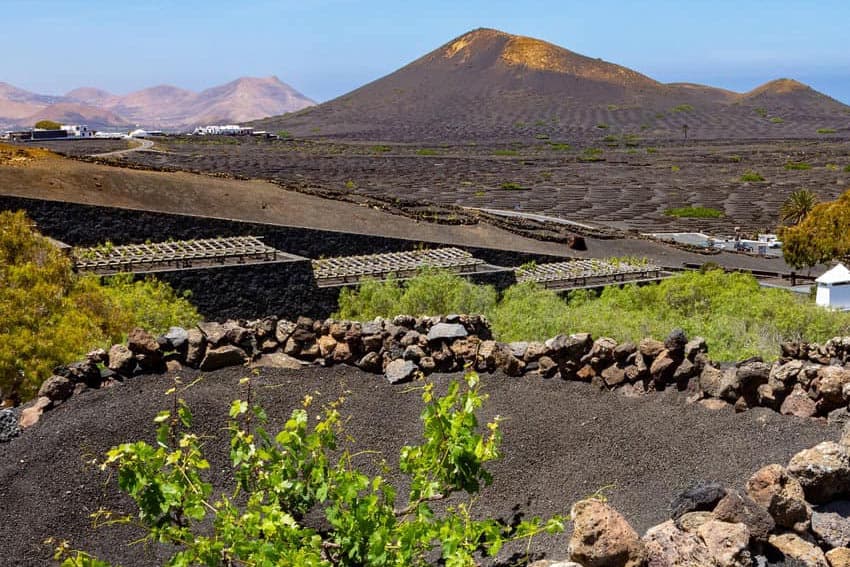
Stylish and contemporary, with an open kitchen, the menu features a variety of dishes with an emphasis on seasonal local ingredients and fresh fish.
Stratvs Winery is located in the La Geria region, surrounded by the volcanic landscape of Lanzarote. The winery was founded in 2008 by a group of winemakers who wanted to create wines that reflected the island’s unique terroir.
Wines are made from traditional Lanzarote grape varieties, including Malvasia, Listan Negro, and Negramoll. The wines have a minerality, acidity, and freshness that is fantastic.
La Bodega De Santiago One of the best meals I had on Lanzarote in the Canary Islands. Set in a 200-year-old house, converted into a restaurant in 2005″ Starting with an empanada de bacalao,and Ibérico ham croquettes. Then fantastic roasted local goat and my favorite dish of the trip, stewed chickpeas with pork—a beautiful culinary experience under the shade of a giant fig tree.
Lilium Restaurant Beautiful modern Canarian food created by chef Orlando Ortega. Bib Gourmand-rated by Michelin.
Where to stay in Lanzarote
Lanzarote is a traveler’s dream destination with plenty of enticing beaches, incredible food, excellent hotels, bars, and the natural wonder of the ocean and the island itself.
My advice? Go there as fast as you can. Secrets Lanzarote Resort & Spa.
The author’s trip was hosted by Lanzarote Tourism, but the opinions are his own.
- Everything is Better in Lisbon - March 1, 2024
- Exploring Gran Canaria in the Canary Islands - October 17, 2023
- Traveling Lanzarote: Hot Times in the Canary Islands - June 28, 2023


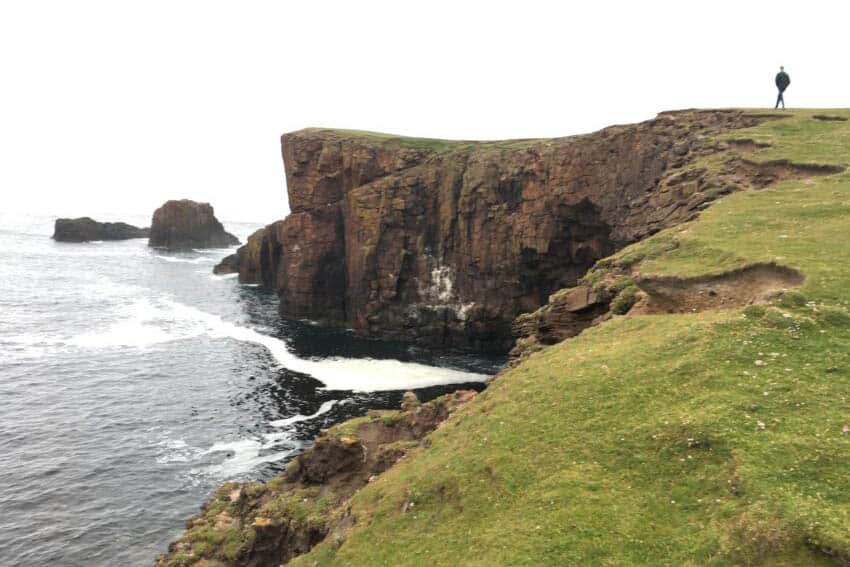



Nice job Paul.